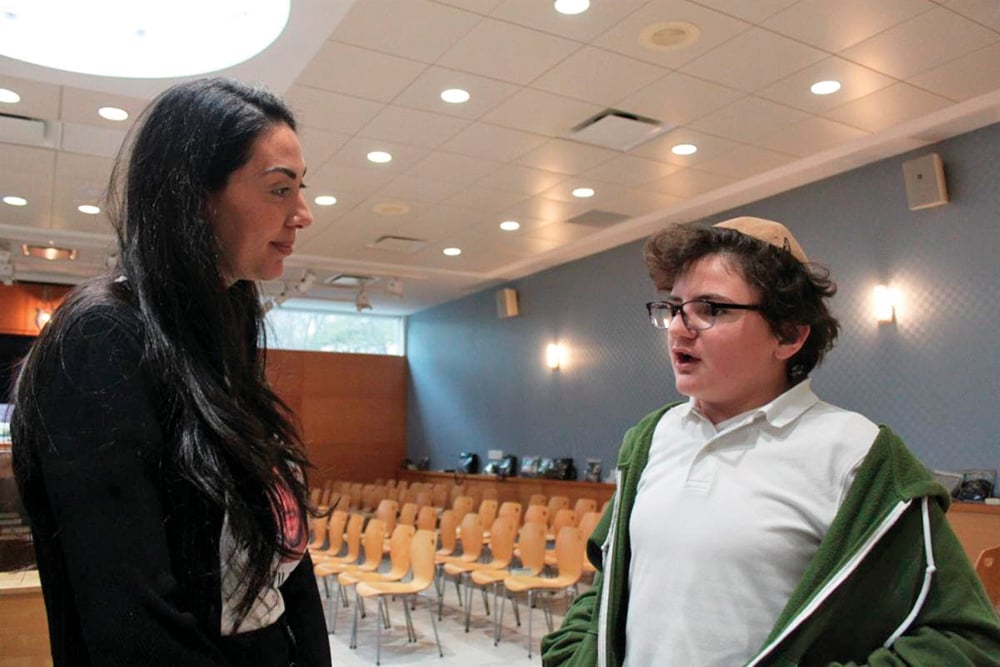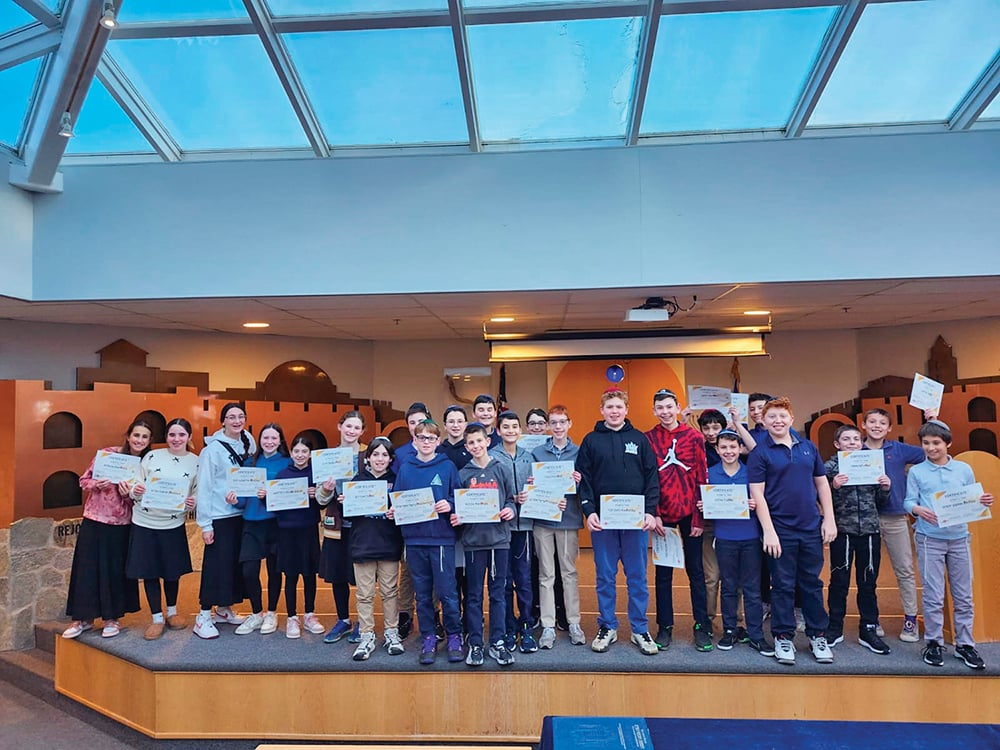


Part III
In the first decade of the community’s existence until the year 1600, the Zamocz archives contain the names of 11 Sephardic Jews; of them six are of Venetian origin, three from Turkey and two whose origins are not given. The total property ownership totaled four structures. From 1600 to 1610, 11 new names were added to the list, nine of them of Italian origin, one Turkish Jew and one whose origins are not given. This time the community was in possession of seven houses. As mentioned before, Thomasz Zamoyski welcomed newcomers from Flanders and Holland into the city, and indeed the archival documents reflect that fact. Documents from the ‘30s and ‘40s of the 17th century added yet 18 new names to the list of Jewish residents of the city, and this time property ownership rose to 15 houses. In the years 1638-1641 there seems to have been a trend of selling houses; this mysterious development may have come as a response to the Chmielnicki massacres, which may have caused a migration of Sephardic residents out of the city.
It is safe to assume that at the height of its success, in the first half of the 17th century, the Zamosc community numbered 40 to 50 families bringing it to a grand total of 200 to 250 people, if we calculate five to six members to a family.
Shatzcky’s claims were based in part on the fact that there is no remnant of a Sephardic cemetery in the city. In addition, we are unaware of the name of even one Sephardic rabbi in Zamocz. However, this contention is erroneous since the cemetery in the city was first used exclusively by Sephardim and later by Ashkenazim as evidenced by the discovery of Sephardic tombstones of residents who died before 1809. In regard to rabbis, remnants of the old synagogue and communal institutions reveal the name of at least one spiritual head of the community named Michael Doktor and his shamash named David. The first reports of a synagogue in Zamosc speak of a structure built in 1603 made of wood, which was only rebuilt as a stone structure in 1620. An inscription gives the name of the synagogue’s benefactor as one Shmuel Barzel. There is evidence to indicate that there existed in Zamocz both a Sephardic and an Ashkenazic community in the ‘40s and ‘50s of the 17th century. As mentioned, in the writ of freedom granted to the community, it stipulated the right to accept Ashkenazim into their ranks if they so desired. Indeed, the archival records indicate that several wealthy and distinguished Ashkenazic were granted permission to buy property in the city. In the years 1632-1635 we find 20 Ashkenazic families in the city with ownership of nine houses. In the years 1640-1650 many Sephardic settlers sold their property and left the city, presumably because of the increasing threat from Cossack hordes. At that point, many Ashkenazim began moving in because of the increased security that the city—which was surrounded by a wall and had its standing army—offered. As a result, the Ashkenazim quickly became a majority in the city. Nevertheless, the Sephardim in the community still managed to maintain a separate existence.
It is difficult to estimate the number of Sephardim in the city after 1648. Here and there we find mention of such individuals residing in the city at the close of the 17th century; for example, we see Thomasz Zamoyski granting permission to one Moshe Zacuto in 1691 to purchase houses in any part of the city. Additional silent testimony to the continued Sephardic presence in the city are the tombstones in the cemetery with dates as late as 1809.
The Sephardic community continued to exist as an independent entity not subject to the Jewish tax that their Ashkenazi brethren were required to pay. Toward the end of the 17th century the community breathed its last and ceased to exist (though as mentioned Sephardim continued to reside in the city as individuals and eventually assimilated into the Ashkenazic majority).
The Sephardim fast becoming a minority were forced to assimilate. Zamosc joined the Vaad Arba Aratzot (Council of the Four Lands) in 1666. The assimilation process began with intermarriage, which was a process that already began in the ‘40s when the Sephardim still constituted the majority. The Ashkenazic newcomers were a decidedly advanced and upper class element and it was not long before they mixed comfortably with the cultured Sephardim, leading to close ties and marriages between the two groups. Examples of “intermarriage” are Chana of the De Kampos family who married the Polish Jew Yaakov Bar, the daughter of Samson Manes married the Polish Jew Moshe Ben Avraham, the wife of Lazer ben Nachman (Nachmanovitz) was a sister of the head of the Sephardic community. In the beginning of this process the Ashkenazim still encountered some difficulty in establishing title to property in the city, which is why, for example, we find the aforementioned Yaakov Bar registering his house in the name of his Sephardic wife. As time progressed, the differences between the two groups became increasingly murky, at least in the eyes of the authorities, whereas in the beginning the Polish authorities added the moniker “Italikus” (a sort of generic term to describe all Sephardim whether they came from Italy or not) in order to differentiate them from the Ashkenazim, by the end of the 17th century this name no longer appears on official documents. In addition, many Jews polonized their names, which made it even more difficult to tell the two groups apart. For example, we see Sephardic Jew Abraham Uziel mentioned in official documents as Abraham Uzelowitz.
Until the Shoah there were many Jewish families in Zamocz who were well aware of their Sephardic roots. Some even held onto a copy of the writ granted to their ancestors by Jan Zamoyski. One of these families was the Peretzes, who numbered among them the famous Yiddish writer Isaac Leib Peretz.
According to the late Eva Bar Zeev who chaired the Israel-based Association of Jews from Zamocz, the first families in Zamocz were descendants of Jews expelled from Torque in Spain. Other than the oft-cited Peretzes, there were many other families in Zamocz who bore evidence of their Iberian roots in their surnames, families like Kastiel, Bechar, (Efrat) Efros, Manzis (Manes), Margulis (Margaliot), Kohen, Maimon, Safian, Gerzon/Gerszon and others1.
Zamoyski’s vision of creating in Zamosc a center of scholarship and trade never came to fruition. Likewise, his hope that Sephardic Jews would continue to settle there and swell the ranks of the community never occurred either. However, what we do have are remnants of an ambitious if failed experiment.
1 Personal correspondence with the author.
The author is the founding editor at Channeking Jewish History and can be reached at [email protected]. You can also follow him on Twitter under the handle hahistorion.













